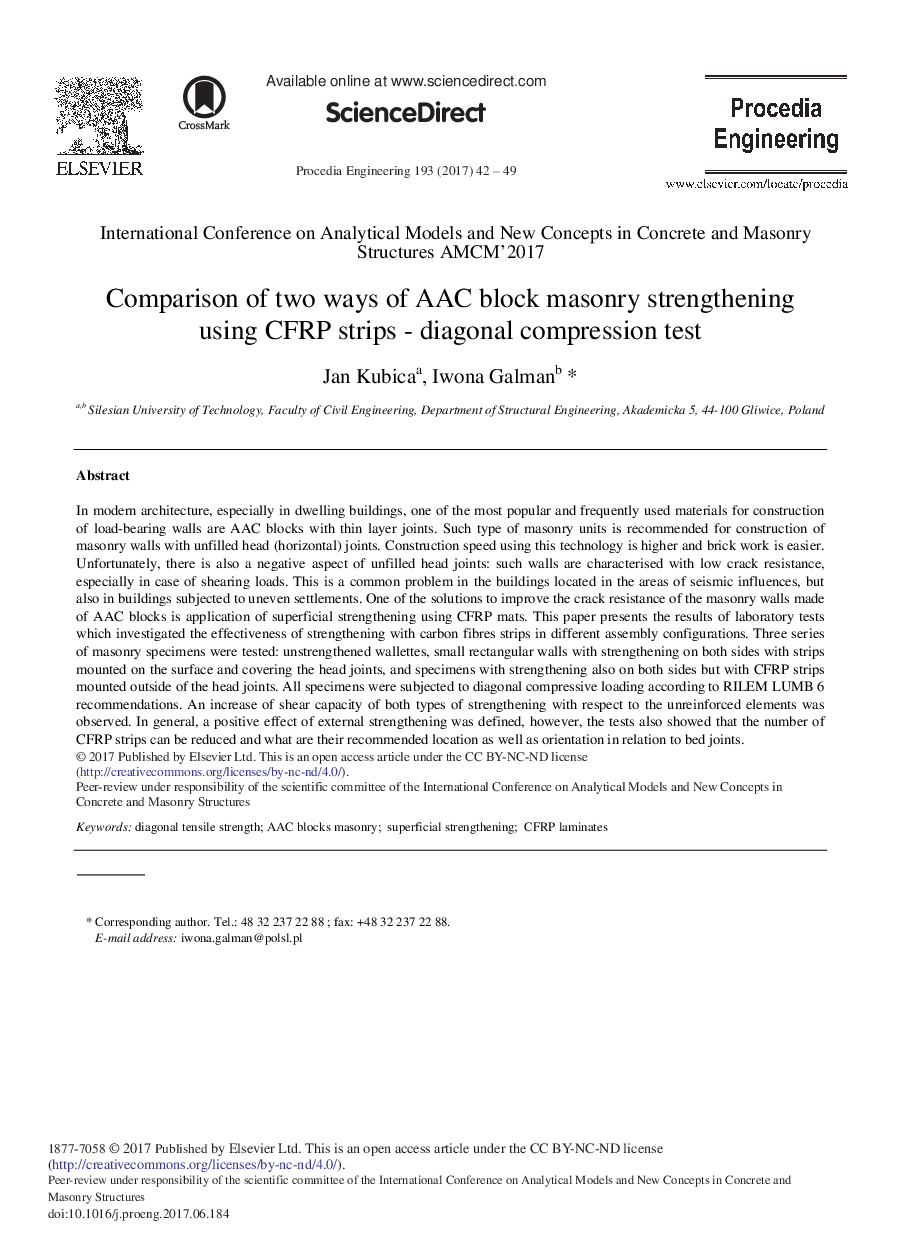| Article ID | Journal | Published Year | Pages | File Type |
|---|---|---|---|---|
| 5027021 | Procedia Engineering | 2017 | 8 Pages |
In modern architecture, especially in dwelling buildings, one of the most popular and frequently used materials for construction of load-bearing walls are AAC blocks with thin layer joints. Such type of masonry units is recommended for construction of masonry walls with unfilled head (horizontal) joints. Construction speed using this technology is higher and brick work is easier. Unfortunately, there is also a negative aspect of unfilled head joints: such walls are characterised with low crack resistance, especially in case of shearing loads. This is a common problem in the buildings located in the areas of seismic influences, but also in buildings subjected to uneven settlements. One of the solutions to improve the crack resistance of the masonry walls made of AAC blocks is application of superficial strengthening using CFRP mats. This paper presents the results of laboratory tests which investigated the effectiveness of strengthening with carbon fibres strips in different assembly configurations. Three series of masonry specimens were tested: unstrengthened wallettes, small rectangular walls with strengthening on both sides with strips mounted on the surface and covering the head joints, and specimens with strengthening also on both sides but with CFRP strips mounted outside of the head joints. All specimens were subjected to diagonal compressive loading according to RILEM LUMB 6 recommendations. An increase of shear capacity of both types of strengthening with respect to the unreinforced elements was observed. In general, a positive effect of external strengthening was defined, however, the tests also showed that the number of CFRP strips can be reduced and what are their recommended location as well as orientation in relation to bed joints.
